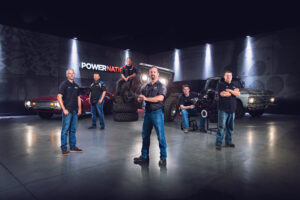Ford’s Cold-Weather Testing In The Sunshine State Leads To Enhanced Vehicle Quality Globally
FORD’S COLD-WEATHER TESTING IN THE SUNSHINE STATE LEADS TO ENHANCED VEHICLE QUALITY GLOBALLY
- Ford vehicles of all sizes – from Focus to F-Series Super Duty – annually submit to subzero testing in the U.S. military’s all-weather laboratory designed to re-create nearly every weather condition on earth
- Extreme cold-weather testing at the Florida lab in the summer contributes to continuity, collaboration and efficiency in Ford’s product development cycle and, ultimately, to enhanced global vehicle quality
- Ford customers worldwide can approach winter with the assurance their vehicles are designed – through extensive testing – to start and run in frigid weather conditions
In this sophisticated, all-weather facility used by the U.S. Air Force to test every aircraft in the Department of Defense inventory [1], Ford engineers can get temperatures down as low as minus 40 degrees Fahrenheit in a span of just 10 hours. The hot, humid climate of northwest Florida in August has no impact on conditions inside the lab – making it ideal for simulating winter in Alaska’s Prudhoe Bay or Canada’s Yellowknife region.
So when it’s the middle of a development cycle, or the middle of summer, and there’s no access to a natural environment where engineers can evaluate whether a vehicle is starting as robustly as it should in below-freezing temperatures, McKinley Climatic Lab allows Ford to simulate, calibrate and validate – all under one roof.
The opportunity to accommodate 75 global prototype vehicles of all sizes for rigorous testing – plus house a versatile team of 54 engineers and technical experts – creates efficiency in the company’s product development cycle that helps Ford learn in just three weeks what could take twice as long in a smaller facility. Collecting multiple data sets, analyzing results, and comparing and contrasting enables Ford engineers to quickly implement changes that enhance vehicle quality and ultimately benefit the customer.
Optimum performance in the most extreme weather conditions means different things for customers in different parts of the world. That’s why Ford engineers strive to account for all variables when seeking assurance that customers who live and work in cold climates will be able to reliably start and run their vehicles in subzero temperatures. Specific situations engineers test for include:
- In the oil fields of Alaska’s Prudhoe Bay, Ford F-Series trucks are not only a mode of transportation, but also a safety device for workers who need a warm cabin to retreat to on-site to prevent cold-weather injury on the job. Ford engineers conduct idle tests at the lab – running the engine week after week as temperature fluctuates from 40 degrees to minus 40 degrees, and examining the exhaust as it heats up then cools back down – to help ensure the needs of these customers are met
- For those customers who depend on their vehicles for work commutes and to transport their families around town, Ford testing at the lab ultimately seeks to provide them with the assurance that their vehicles are designed to start and run in the bitter cold. As temperatures in the lab drop to minus 22 degrees, Ford engineers examine the volatility of 13 different types of fuel commonly used by customers across the globe to calibrate the cold start
When running tests at such low temperatures inside McKinley Climatic Lab, engineers make changes daily to help ensure engine start and vehicle driveability, and that Ford is meeting the high quality standards its customers expect. Learnings from these cold-weather tests helped Ford engineers perfect the 6.7-liter engine that powers the current F-Series Super Duty. Engineers found that replacing metallic plugs with ceramic gold plugs enabled the engine to heat up more quickly, for a more robust start.









